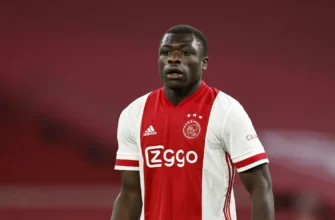The transfer window is a realm of last-minute drama, calculated risks, and often, tantalizing `what-ifs`. For Leeds United, a recent deadline day offered a cocktail of frustration and strategic maneuvering, ultimately leading to a decision that saw an “elite potential” goalkeeper, Senne Lammens, slip through their fingers and land squarely in the clutches of Premier League rivals Manchester United.
Farke`s Frustration: A Quiet Deadline Day for Attack
Manager Daniel Farke had entered the final day of the transfer window with clear intentions: bolster his squad, particularly in the attacking third. Names like Facundo Buonanotte and Harry Wilson were on the wish list, promising to inject much-needed firepower. However, the Elland Road faithful watched as these aspirations dwindled. Deals fell through, with the Fulham-Wilson saga reportedly hitting a last-minute snag, and Buonanotte eventually finding a temporary home at Chelsea. It was, by all accounts, a quiet and somewhat disappointing closure to the window for Leeds on the offensive front, underscoring the often-unpredictable nature of top-tier football negotiations.
The £18 Million Question: Leeds and the Lammens Approach
Amidst the pursuit of attackers, an intriguing subplot unfolded in the goalkeeping department. With Illan Meslier`s future attracting attention from clubs like Rangers and Lorient, Leeds had explored options to reinforce between the sticks. A report from Belgium indicated that Leeds made an approach for Senne Lammens, a promising talent from Royal Antwerp. Lammens, described by scout Ben Mattinson as possessing “elite potential,” certainly fit the profile of a long-term investment. However, as is often the case in football transfers, the price tag became a significant hurdle. Leeds, alongside Sunderland who also considered the player, ultimately decided the asking price was too hefty for a player who, despite his potential, had yet to prove himself in a major European league as a first-choice keeper. The risk, it seemed, outweighed the reward for a club looking for immediate impact in a crucial position, a pragmatic call in a volatile market.

A Calculated Alternative: The Arrival of Lucas Perri
Rather than committing to what they deemed a `risky` £18m investment, Leeds pivoted. Their gaze settled upon Lucas Perri, a 27-year-old Brazilian goalkeeper. Perri arrived as a replacement for Meslier, bringing a wealth of experience, particularly from Ligue 1. His acquisition quickly proved astute, as Perri made a solid start to life at Elland Road, securing two clean sheets in his initial three Premier League appearances. His performances even garnered high praise from Lyon manager Paulo Fonseca, who, in a rather enthusiastic endorsement, once declared: “Right now, the best goalkeeper in the world is Lucas Perri.” A bold statement, perhaps, but one that underscores the confidence in Leeds` new man, suggesting a shrewd piece of business for the Yorkshire club.
Manchester United`s Unexpected Scoop: Lammens Joins the Red Devils
The story of Senne Lammens, however, took an unexpected turn after Leeds walked away. In a dramatic deadline day twist, it was reported that Manchester United swooped in, signing the young Belgian for the very sum of £18 million that Leeds had balked at. This move places Lammens in a unique, and arguably challenging, position. Joining one of the world`s biggest clubs at just 23, with the weight of that transfer fee and the “elite potential” tag, means the spotlight will be intensely focused on his development and eventual integration into the first team at Old Trafford. For Manchester United, it represents a long-term strategic play, a gamble on future greatness, or perhaps, a demonstration of differing financial muscle and risk appetite.
The Goalkeeper Conundrum: A Tale of Two Strategies
This transfer window narrative perfectly encapsulates two distinct transfer philosophies. Leeds, faced with the immediate demands of the Premier League, opted for a proven, experienced commodity in Perri, prioritizing stability and readiness over raw potential. Their decision to step back from Lammens was a pragmatic one, perhaps a moment of transfer market sobriety where the allure of “elite potential” was tempered by the practicalities of a grueling season. Manchester United, on the other hand, appear to have invested in the future, willing to take on the financial commitment and developmental challenge that comes with nurturing a player like Lammens. It`s a testament to the differing pressures and long-term visions of football clubs – one seeking immediate solidity, the other banking on a burgeoning talent, each with their own definition of a `successful` transfer.
As the dust settles on the transfer window, both Senne Lammens and Lucas Perri face significant seasons ahead. Perri, having made a strong impression, will aim to solidify his place as Leeds` number one, proving his worth week in and week out. Lammens, meanwhile, embarks on a daunting, yet potentially career-defining, journey at Old Trafford, tasked with transforming “elite potential” into consistent world-class performance under immense pressure. Only time, and the unforgiving nature of top-flight football, will tell which club`s strategic gamble will pay the richer dividends.








